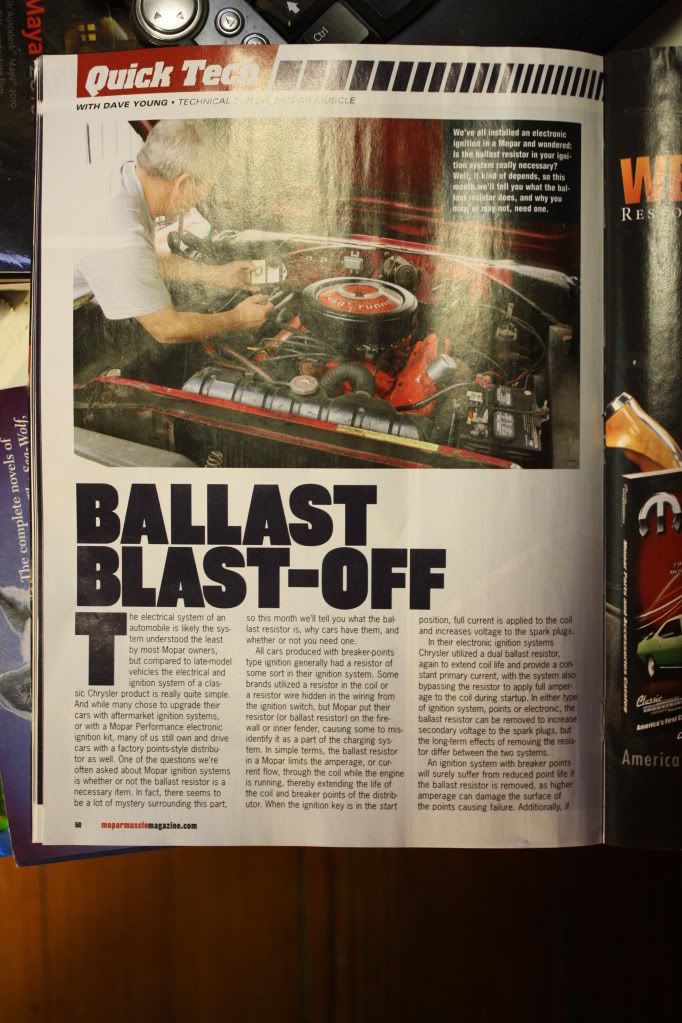I'm not 100% certain that's correct, but it probably is.
Then can a Mopar ecu handle triggering a non ballast coil of appropriate static resistance? My guess is yes but the coil cannot since there is no current limiting or varying w/o the Mopar ballast thus the coil will burn up at low rpm eventually or would on the other hand fail to perform at high rpm due to low current. Is the factor determining longevity with the mopar ecu related to correct resistance of the coil load? I guess it is but to how much of an extent? It seems the current variable with the Mopar ballast is the main reason the Mopar system is not "desired" since it is slow to respond to rpm increase and decrease creating low current or current rise lag at high rpm and potential high current at low rpm.. I reckon the secondary issue is the Mopar ecu will not work w/o a ballast hooked on a coil since the coil would then have no current limiting, thus they have to be used together or neither can be used.
[/QUOTE]A lot of coils listed and marked as "12v" or "Use without coil resistor" have a ballast resistor inside the coil.[/QUOTE]
How about the blue streak ford E core you recommend for hei conversion, does it have a resistor - ballast? Does the blaster II ? I vaguely remember the blaster II having an external resistor you could opt out of if you saw fit.
[/QUOTE]Yeah, there's good discussion of the workings of the HEI vs. Mopar electronics
here.[/QUOTE]
This did not clarify the functional differences in mopar ecu , ballast and coil vs an hei setup in my opinion but i think it is a start.
This page seems to have considerably more depth:
http://yarchive.net/car/ignition.
here is a little copy and paste from the page that got me interested
:
For electronically switched ignitions (as opposed to capacitor discharge)
where the coil is the energy storage element, there are only two
major and two minor considerations. The major ones are a) how much current
the pass transistor will flow and b) the dwell or how soon after the trigger
the ignition turns the current back on. Just about every ignition system
I've looked at will pass more current than any commercially made coil
will withstand so that is not really a consideration. The sooner the
ignition switches back on after the trigger the better. That is because
the inductance of the coil takes a finite amount of time to charge.
At high RPM on multi-cylinder engines, that charge time can approach
the amount of time available between sparks. (A reason why coil-per-coil
has become so popular) There are "high performance" chrysler-style
ignition modules sold for huge premiums (in the Summit catalog, Mopar
modules range in price from $39 to $79 compared to the $19 I pay
for mine) that claim more spark, stable dwell (who cares) and so on.
My measurements here in the lab shows that the generic module Rockhill
brand LX-101 (the cheapest I could find) turns the current back on
literally while the secondary ringing is still going on.
..


















